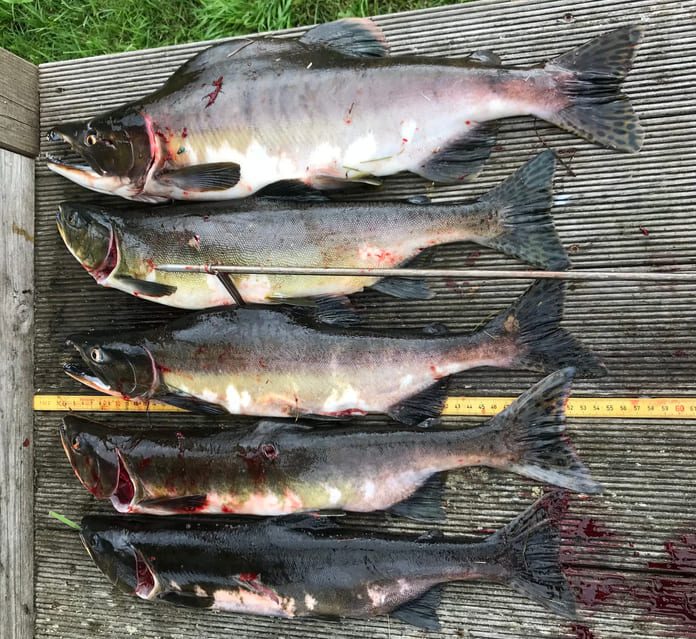The number of invasive pink humpback salmon has more than doubled since 2021.
For the first time in recorded history, the number of humpback (pink) salmon caught in Norwegian fjords has exceeded that of the native Atlantic salmon, with figures for 2023 showcasing a significant shift in catch composition.
Statistics Norway reported on Friday that the humpback salmon catch has more than doubled since 2021, reaching 183 tons this year and comprising 62 percent of the total salmon catch.
Conversely, the catch of wild Atlantic salmon has seen a decrease, falling by 21 tons from the previous year to 113 tons in 2023. The counties of Troms and Finnmark have been identified as the regions with the highest catch rates of wild salmon, and these areas also account for the majority of humpback salmon catches.
Humpback salmon is an invasive species in Norway, having spread to Norwegian rivers in the 1960s after releases on the Kola Peninsula by Russia. The species, which has a two-year life cycle and spawns biennially, is predominantly found in the northern regions of Troms and Finnmark but have been caught in Scotland, Ireland and England.
Concerns about the invasive species establishing itself in significant numbers have prompted the Norwegian government to intensify efforts to curb its spread. Measures have included the installation of salmon traps and the liberalization of fishing regulations targeting the humpback salmon.
The Norwegian Environment Agency has reported positive outcomes from the deployment of salmon traps, with some rivers in Varanger seeing nearly no humpback salmon upstream of the barriers. The effectiveness of these measures was highlighted as ten traps successfully prevented almost 100,000 humpback salmon from ascending Eastern Finnmark rivers to spawn this summer, illustrating a potential strategy to halt the invasive species’ expansion and protect Norway’s indigenous fish populations and biodiversity.

